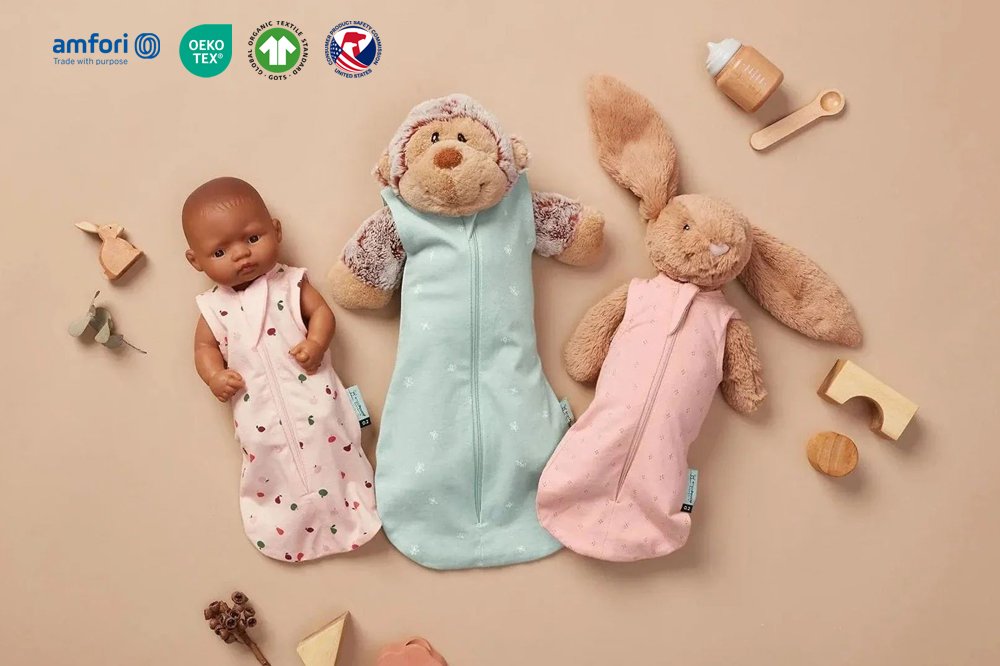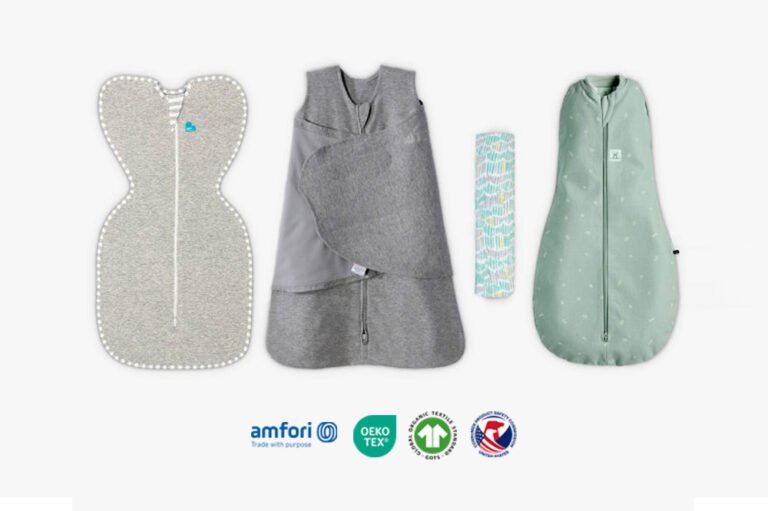
Introduction
Importance of Safe Sleep for Babies
Ensuring that babies sleep safely is paramount to their overall health and well-being. Safe sleep practices can significantly reduce the risk of sudden infant death syndrome (SIDS) and other sleep-related hazards. As parents and caregivers, understanding the intricacies of creating a safe sleep environment is crucial.
Overview of the Article
This comprehensive guide delves into the importance of baby sleeping bags, how to choose the right one, and practical tips to ensure your baby sleeps safely and comfortably. We also address common parental concerns, provide expert advice, and share testimonials from other parents.
Understanding Baby Sleeping Bags
What Are Baby Sleeping Bags?
Baby sleeping bags, also known as wearable blankets, are specially designed garments that keep babies warm while they sleep without the need for loose blankets. They come with armholes and neck openings to ensure safety and comfort.
Types of Baby Sleeping Bags
There are various types of baby sleeping bags available:
- Standard Sleeping Bags: These are suitable for everyday use and come in various tog ratings for different seasons.
- Swaddle Bags: Designed for newborns, these bags help in transitioning from swaddling to a sleeping bag.
- Travel Sleeping Bags: Equipped with slots for car seat harnesses, these are perfect for on-the-go families.
Benefits of Using Baby Sleeping Bags
Safety Benefits
Baby sleeping bags help reduce the risk of SIDS by eliminating the need for loose blankets that can cover a baby’s face and obstruct breathing. They also ensure babies stay on their backs, the safest sleep position.
Comfort and Warmth
Designed to provide consistent warmth throughout the night, baby sleeping bags prevent babies from kicking off covers and getting cold. This helps maintain a stable body temperature, promoting better sleep.
Convenience for Parents
With baby sleeping bags, parents can rest assured that their babies are safely tucked in without the need to constantly adjust covers. They are also easy to use, with many featuring zippers for quick diaper changes.
Choosing the Right Baby Sleeping Bag
Material and Fabric
Selecting the right material is essential for your baby’s comfort. Look for breathable fabrics like cotton, bamboo, or merino wool that are gentle on the baby’s skin and regulate temperature effectively.
Size and Fit
Ensure the sleeping bag fits your baby snugly around the neck and armholes without being too tight. A well-fitted sleeping bag will prevent the baby from slipping inside and will allow free movement of the legs.
Seasonal Considerations
Sleeping bags come in different tog ratings, which indicate their warmth. A lower tog (0.5-1.0) is suitable for summer, while a higher tog (2.5-3.5) is ideal for winter. Adjust the tog rating according to the room temperature.
Safe Sleep Environment
Ideal Room Temperature
Maintain the baby’s room temperature between 16-20°C (60-68°F) to ensure a comfortable and safe sleeping environment. Use a thermometer to monitor the temperature.
Safe Sleep Position
Always place your baby on their back to sleep, as this is the safest position. Avoid side or stomach sleeping, which increases the risk of SIDS.
Avoiding Loose Bedding
Loose blankets, pillows, and stuffed toys should be kept out of the baby’s sleep area. These items can pose suffocation risks. Instead, opt for a fitted sheet on the mattress.
Using Baby Sleeping Bags Safely
Proper Usage Instructions
- Dress your baby appropriately: Under the sleeping bag, use light sleepwear suitable for the room temperature.
- Zip the bag correctly: Ensure the zipper is fully closed to prevent the baby from wriggling out.
- Check regularly: Periodically check if the baby is too hot or too cold and adjust clothing layers accordingly.
Common Mistakes to Avoid
- Overheating: Avoid overdressing the baby or using a sleeping bag with a tog rating that’s too high for the room temperature.
- Wrong size: Using a sleeping bag that’s too big or too small can be unsafe. Always follow the manufacturer's size guidelines.
- Incorrect positioning: Make sure the baby’s head remains uncovered during sleep.
Transitioning from Swaddling to Sleeping Bags
Start the transition gradually by using swaddle bags that allow for free arm movement. As the baby gets accustomed, switch to standard sleeping bags to maintain comfort and security.
Recognizing Sleep Cues in Babies
Understanding Baby Sleep Patterns
Babies have shorter sleep cycles than adults, with frequent wakings. Understanding these patterns helps in setting realistic sleep expectations.
Identifying Tiredness Signs
Look for signs like rubbing eyes, yawning, fussiness, and decreased activity levels to identify when your baby is ready for sleep.
Creating a Sleep Routine
Establish a consistent bedtime routine with calming activities like a warm bath, gentle rocking, or reading a book. This helps signal to your baby that it’s time to sleep.
Dealing with Common Sleep Challenges
Night Wakings
Night wakings are normal but can be minimized by ensuring the baby is comfortable, fed, and has a clean diaper before bedtime. Gradual sleep training techniques can also be helpful.
Sleep Regression
Sleep regressions often occur around developmental milestones. During these times, maintain a consistent routine and provide extra comfort and reassurance.
Teething and Sleep
Teething can disrupt sleep due to discomfort. Offer teething toys or a cold washcloth to soothe the baby’s gums and ensure the sleep environment is comfortable.
Tips for Promoting Good Sleep Habits
Establishing a Bedtime Routine
Consistency is key. A regular bedtime routine helps babies understand when it’s time to sleep. Include calming activities that your baby enjoys.
Creating a Calming Sleep Environment
A dark, quiet room with a comfortable temperature promotes better sleep. Consider using white noise machines to mask background noise.
Encouraging Self-Soothing
Teach your baby to self-soothe by allowing them to fall asleep on their own. Gradually reduce rocking or feeding to sleep to encourage independent sleep habits.
Parental Concerns and Myth
Addressing Common Worries
Parents often worry about their baby’s sleep safety and comfort. Ensure you are informed about safe sleep practices and follow them consistently.
Debunking Sleep Myths
Contrary to popular belief, babies do not need pillows or thick blankets for comfort. In fact, these can be hazardous. Sleeping bags provide all the necessary warmth and security.
Emergency Situations and Sleep Safety
What to Do in Case of an Emergency
In case of an emergency, such as choking or difficulty breathing, call emergency services immediately. Familiarize yourself with infant CPR techniques.
Recognizing Signs of Distress
Be alert for signs of distress, including irregular breathing, excessive crying, or a sudden change in sleep patterns. Consult a pediatrician if any of these signs occur.
Maintaining Baby Sleeping Bags
Cleaning and Care Instructions
Follow the manufacturer’s washing instructions to maintain the sleeping bag’s quality. Regular washing keeps it hygienic and safe for use.
When to Replace a Sleeping Bag
Replace the sleeping bag if it shows signs of wear and tear, such as loose threads, broken zippers, or thinning fabric. Always prioritize safety.
Alternatives to Baby Sleeping Bags
Swaddles and Sleep Sacks
Swaddles are ideal for newborns, while sleep sacks can be a transitional option before moving to sleeping bags. Both provide security and comfort.
Blankets and Bedding
While blankets can be used with older children, they pose risks for infants. Always prioritize sleeping bags or wearable blankets for younger babies.
Testimonials and Expert Opinions
Parent Testimonials
Many parents find baby sleeping bags to be a game-changer for ensuring safe and sound sleep. Testimonials highlight improved sleep quality and peace of mind.
Pediatrician Advice
Pediatricians recommend baby sleeping bags as a safe sleep option. They emphasize the importance of following safe sleep guidelines and choosing appropriate sleeping bags.
Conclusion
Recap of Key Points
Baby sleeping bags offer numerous benefits, including enhanced safety, comfort, and convenience. By choosing the right sleeping bag and following safe sleep practices, parents can create a secure sleep environment for their babies.
Final Thoughts on Safe Sleep for Babies
Ensuring your baby’s safe sleep is a continuous process that involves careful attention to their needs and adherence to recommended practices. Baby sleeping bags are an excellent tool in this journey.
FAQs
How Often Should I Wash My Baby’s Sleeping Bag?
Wash your baby’s sleeping bag every one to two weeks or more frequently if it becomes soiled. Always follow the care instructions provided by the manufacturer.
Can Baby Sleeping Bags Be Used Year-Round?
Yes, baby sleeping bags can be used year-round. Choose the appropriate tog rating for the season to ensure your baby remains comfortable.
How Do I Know If My Baby Is Too Hot or Too Cold?
Feel your baby’s neck or chest to check their temperature. If they are sweaty or feel hot, they might be too warm. If they feel cool, add a layer of clothing or use a warmer sleeping bag.
Are Baby Sleeping Bags Safe for Newborns?
Yes, baby sleeping bags are safe for newborns if they fit properly. Consider swaddle bags designed specifically for newborns to ensure a snug and secure fit.
What Should My Baby Wear Inside a Sleeping Bag?
Dress your baby in light sleepwear appropriate for the room temperature. A long-sleeve onesie or a bodysuit is often sufficient, but adjust based on the tog rating of the sleeping bag.






